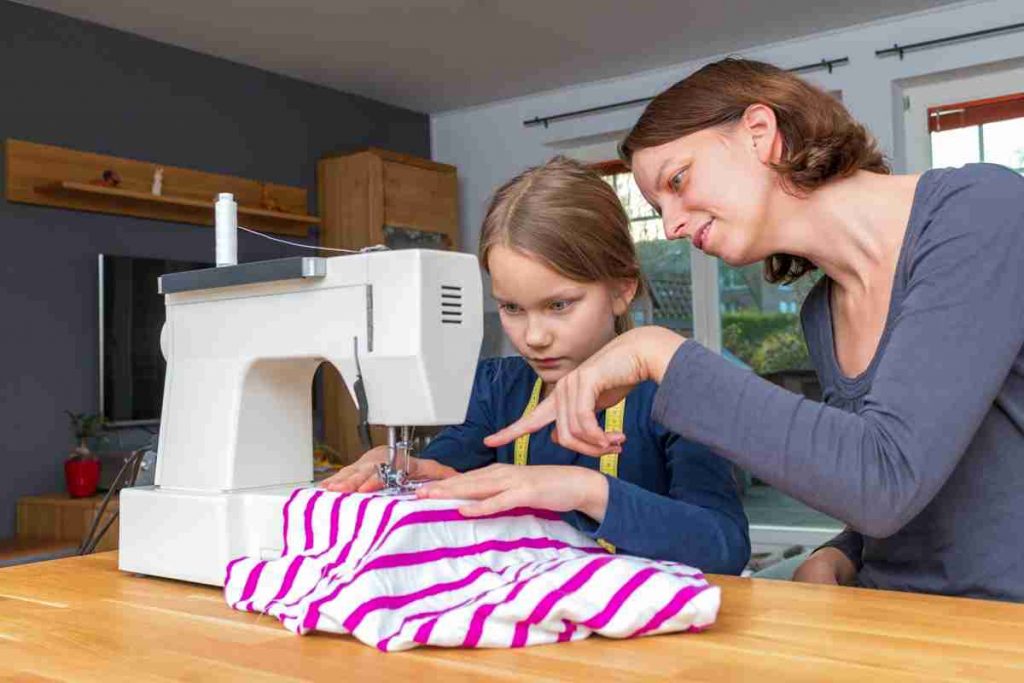Have you ever thought about how long does it take to learn to sew? after seeing the delicate intricacies of hand-sewn garments? Sewing is not only an essential skill in a society where the handmade is making a victorious return, but it is also a rewarding endeavor.
Let us answer your questions and lead you through the wonderful world of sewing. Let’s unravel the answers to your questions and guide you through the fascinating world of sewing.
Table Of Contents
How Long Does It Take To Learn To Sew?
Embarking on the sewing journey requires dedication and time. It normally takes around 2-3 weeks to become used to stitching. However, since mistakes are natural, the procedure is time-consuming and demands patience. Sewing is a technique that can be learned quickly, whether you are a beginner or an expert sewer.
What Do I Need To Learn To Sew?
Before diving into the stitches, you must equip yourself with the right tools. Whether you choose hand sewing or machine sewing, essentials include sharp needles, thread, bobbins, pins, fabric shears, tape measure, and an iron. If you opt for projects with patterns, ensure you have them printed and cut to size. Fabric chalk becomes handy, especially when working around paper patterns.
Is Sewing Hard To Learn?
Sewing is a highly individualistic process. With patience and an openness to face challenges, it doesn’t have to be complicated. Developing good eye-to-hand coordination is an added advantage. Modern sewing machines offer customization based on skill levels, with built-in stitch types and adjustable needle speeds. Starting small with basic projects like sewing on buttons or crafting a tote bag is a great way to build confidence.
What Basic Stitches Do You Need for Hand Sewing?
Hand sewing involves several fundamental stitches. The ladder stitch, also known as the “blind stitch,” is valuable for creating invisible seams. Cross stitch, whip stitch, running stitch, and backstitch each serve distinct purposes. These stitches, though with their challenges, become easier with practice.
Can I Sew Without a Pattern?
While patterns are essential for complex projects, smaller items may not require them initially. Think of a pattern as a helpful template, guiding you on where to start and how to piece together the fabric. As you advance to more intricate creations, a pattern becomes a crucial tool, saving you from unnecessary hassles.
At What Age Should You Start Sewing?
Learning to sew at a young age, about 6-9, might be useful since children absorb knowledge more quickly. In contrast, sewing is a skill that can be learned at any age. It not only promotes creativity but also provides practical solutions to garment-related issues, such as repairing tiny holes or replacing lost buttons.
How Long Does It Take To Sew a Shirt?
Sewing a shirt involves finding the right pattern, choosing fabric, measuring, cutting, ironing, and assembling. The entire process may take 3-4 hours for a basic top. Patience is crucial, allowing room for imperfections and adjustments.
How Many Hours Does It Take To Sew a Dress?
Moving from shirts to dresses, the timeframe varies. A simple dress might take 12-18 hours from start to finish. Factors like fabric type and complexity of design play a role. Giving yourself flexibility for adjustments is key to a successful sewing experience.
Is Sewing Clothes Cheaper Than Buying?
Short-term considerations favor buying clothes off the rack, but in the long run, sewing proves cost-effective. Learning basic stitches extends the lifespan of garments, allowing you to fix simple issues. As your skills progress, you can create high-quality garments from scratch, saving money in the long term.
Final Thoughts
Learning to sew is a lifelong skill that brings immense satisfaction. It takes around 2-3 weeks to feel comfortable with the skill, but the trip after that is worthwhile. Sewing is a wonderful alternative for individuals who want to be self-sufficient and avoid mass-produced things since patience is the key to success.
Now that you’ve mastered the art of stitching, let’s go into the difficult world of the sewing machine. Explore the art of stitching with precision and creativity!







